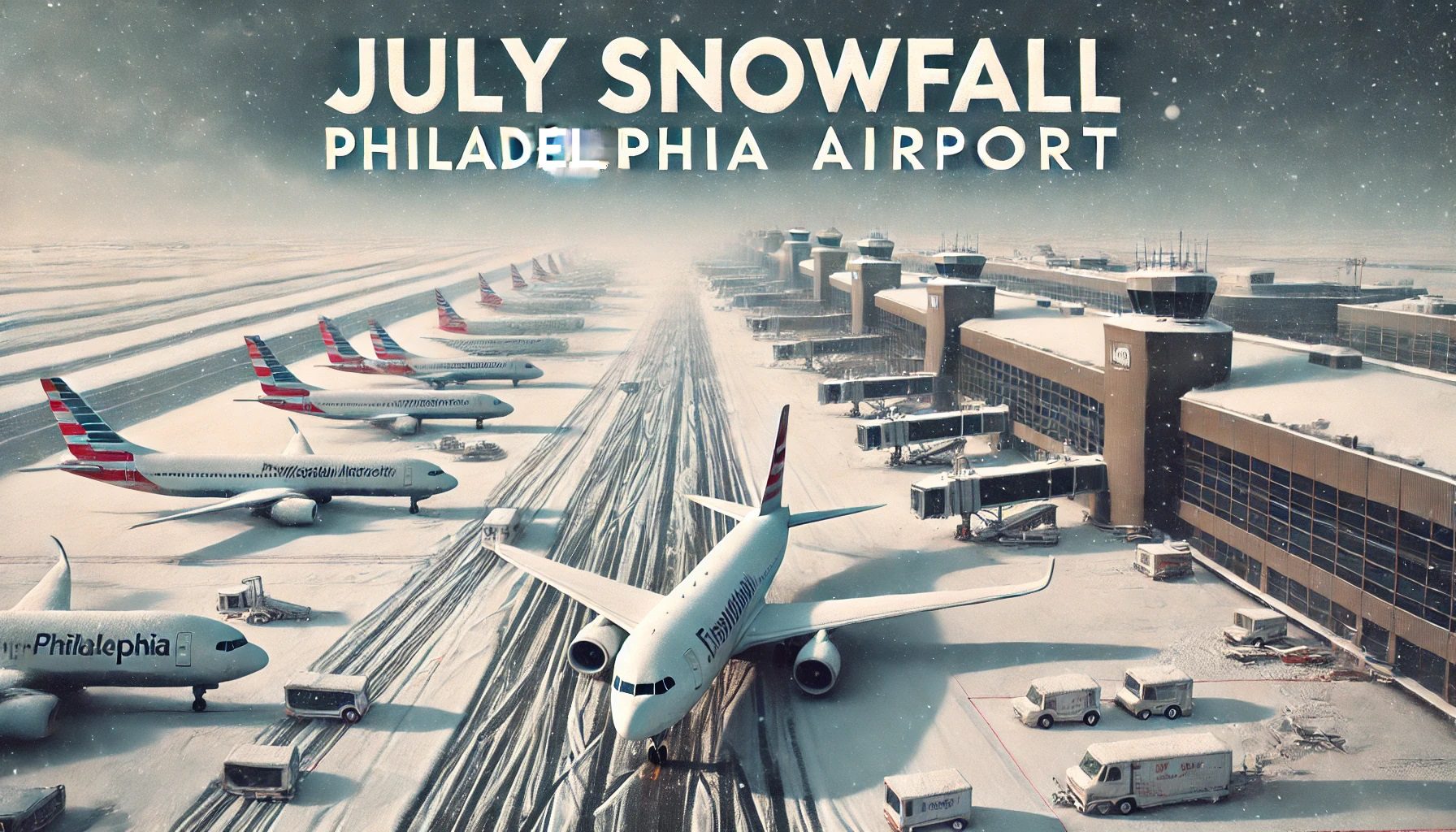Historical Occurrence of July Snowfall at Philadelphia Airport: July Snowfall Philadelphia Airport

July snowfall philadelphia airport – The occurrence of snowfall at Philadelphia Airport in July is a rare meteorological phenomenon. However, there have been a few instances where measurable snowfall has been recorded during this month.
Amidst the unprecedented snowfall blanketing Philadelphia Airport, a flicker of controversy arose with the Delta Airlines Palestinian flag incident. However, as the snow continued to fall, the airport’s focus returned to ensuring the safety and well-being of travelers amidst the winter storm.
The most recent instance of July snowfall at Philadelphia Airport occurred on July 20, 1945, when 0.1 inches of snow fell. Prior to that, the only other known occurrence of July snowfall at the airport was on July 1, 1888, when 0.2 inches of snow was recorded.
In the midst of the ongoing Russia-Ukraine war , an unusual meteorological event occurred at the Philadelphia airport. On a sweltering July day, the airport experienced a sudden snowfall, leaving passengers and staff alike in disbelief. As the flakes danced in the summer air, the airport became a surreal winter wonderland, a stark contrast to the geopolitical turmoil unfolding across the globe.
Snowfall Instances at Philadelphia Airport in July
| Date | Snowfall Amount | Weather Conditions |
|---|---|---|
| July 20, 1945 | 0.1 inches | Cold front with heavy rain and thunderstorms |
| July 1, 1888 | 0.2 inches | Cold front with strong winds and hail |
Climatological Factors Contributing to July Snowfall in Philadelphia
The occurrence of snowfall in Philadelphia during the month of July is an extremely rare event that requires a unique set of atmospheric conditions. Several climatological factors play a crucial role in creating the necessary environment for snow formation during this time of the year.
Cold Fronts
The passage of a strong cold front can bring a significant drop in temperatures, creating the potential for snow formation. Cold fronts are boundaries between two air masses of different temperatures and densities. As the cold air mass advances, it pushes the warmer air mass upward, leading to cooling and condensation.
Upper-Level Troughs
Upper-level troughs are elongated areas of low pressure in the upper atmosphere. They can act as channels for cold air to descend from higher altitudes. When an upper-level trough is positioned over the Philadelphia area, it can draw down cold air from the north, contributing to the formation of snow.
Moisture Availability
The presence of sufficient moisture in the atmosphere is essential for snow formation. Moisture can come from various sources, such as evaporation from water bodies or the transport of moisture by winds. When cold air encounters moisture, it can condense and form clouds. If the temperature is cold enough, these clouds can produce snow.
Key Climatological Factors Contributing to July Snowfall
- Passage of a strong cold front
- Presence of an upper-level trough
- Sufficient moisture availability
Impacts and Implications of July Snowfall on Philadelphia Airport Operations

July snowfall events pose significant challenges and disruptions to the smooth operations of Philadelphia Airport. The unexpected and unpredictable nature of these events requires the airport to implement specific measures and protocols to mitigate their impacts and ensure the safety of passengers and staff.
The primary concern during July snowfall is the disruption of flight schedules. Snow accumulation on runways and taxiways can hinder aircraft takeoffs and landings, leading to delays, cancellations, and diversions. The airport’s ground crew must work diligently to clear the runways and ensure safe operating conditions, which can be a time-consuming process.
Passenger Safety
Passenger safety is paramount during July snowfall events. Snow and ice can create slippery surfaces, increasing the risk of slips, falls, and injuries. The airport implements measures such as snow removal, deicing, and salting of walkways and ramps to minimize these risks. Additionally, passengers are advised to wear appropriate footwear and exercise caution when navigating the airport during snowfall.
Runway Operations
Runway operations are critical to the airport’s functionality. Snow accumulation can reduce visibility and traction, affecting aircraft landing and takeoff procedures. The airport uses specialized equipment, such as snowplows and deicing vehicles, to maintain runway conditions and ensure safe aircraft operations. Runway closures may be necessary in severe snowfall conditions, further disrupting flight schedules.
Specific Measures, July snowfall philadelphia airport
Philadelphia Airport has implemented specific measures to mitigate the impacts of July snowfall. These include:
- Early warning systems to monitor weather forecasts and anticipate snowfall events.
- A dedicated snow removal team equipped with specialized equipment to clear runways and taxiways.
- Deicing and anti-icing measures to prevent snow and ice accumulation on aircraft.
- Passenger communication systems to provide real-time updates on flight delays and cancellations.
- Coordination with airlines and other airport stakeholders to ensure a coordinated response to snowfall events.